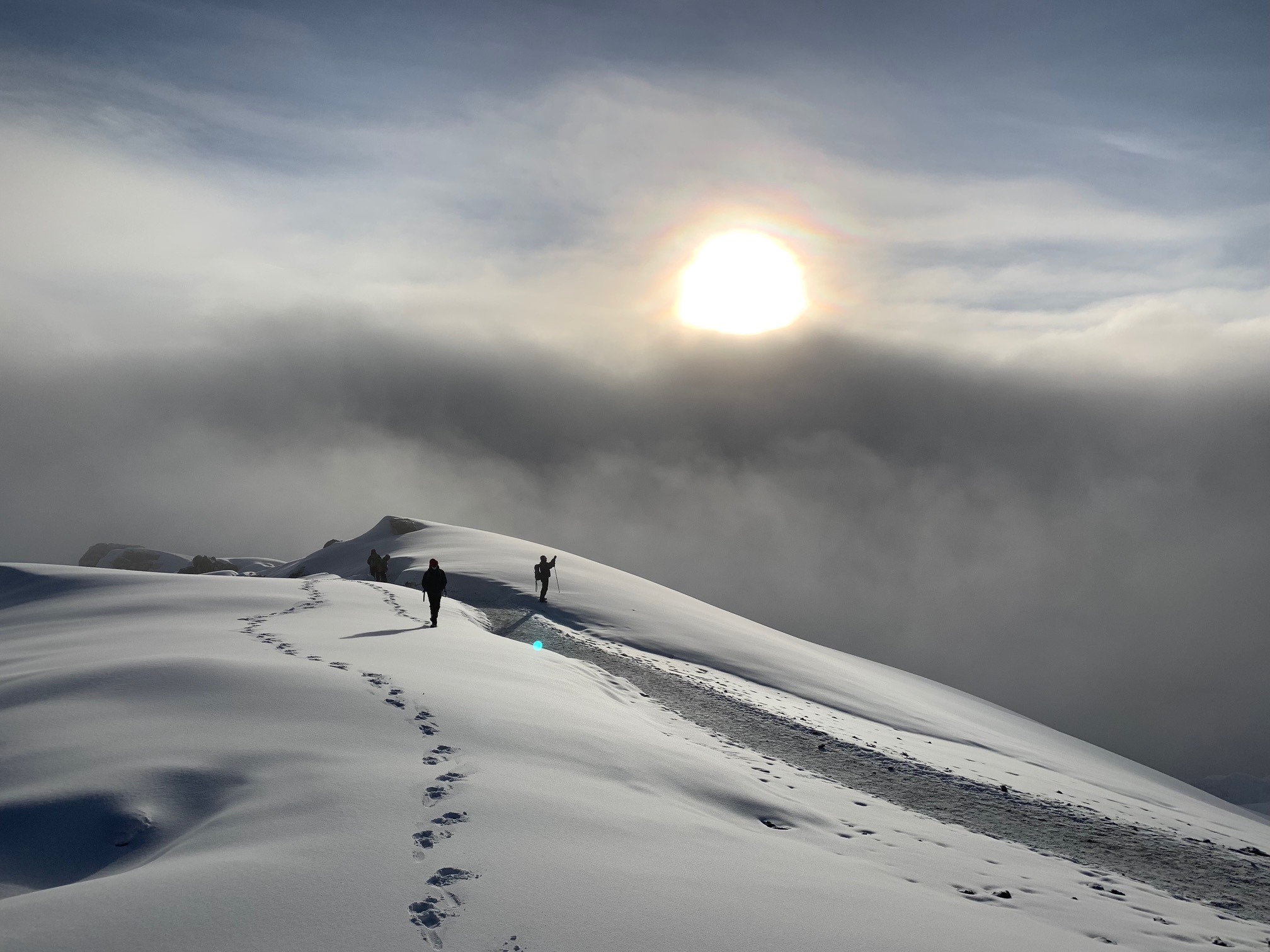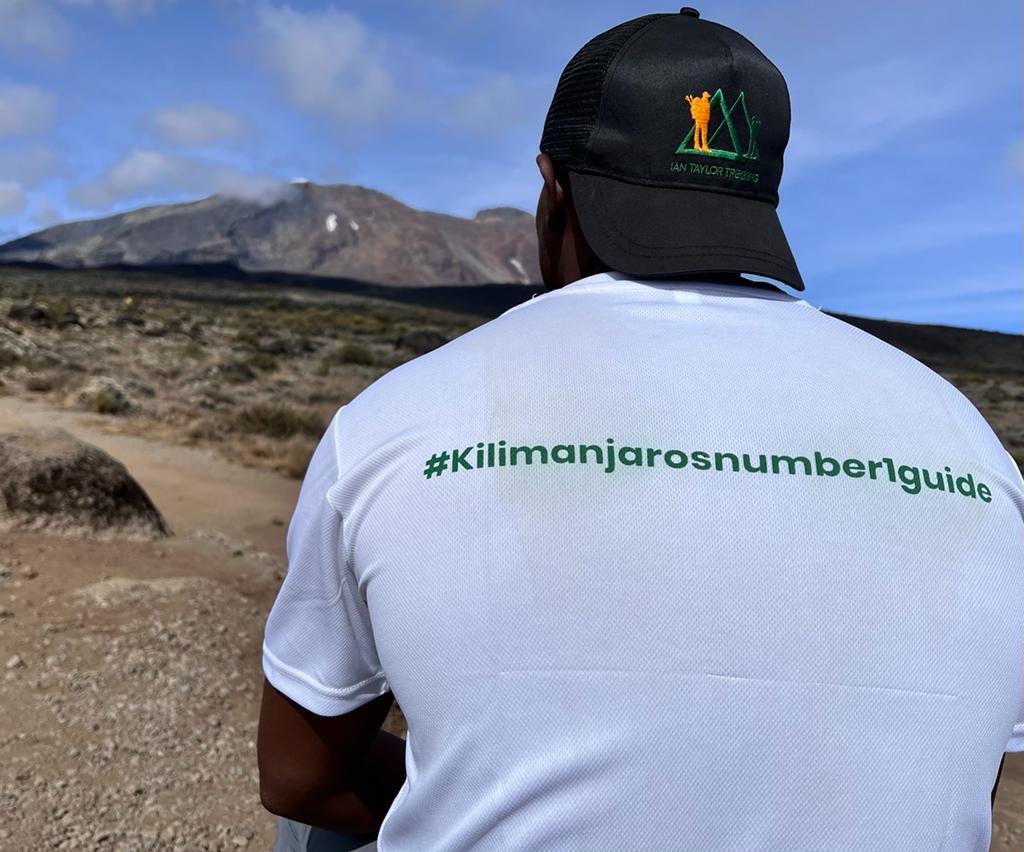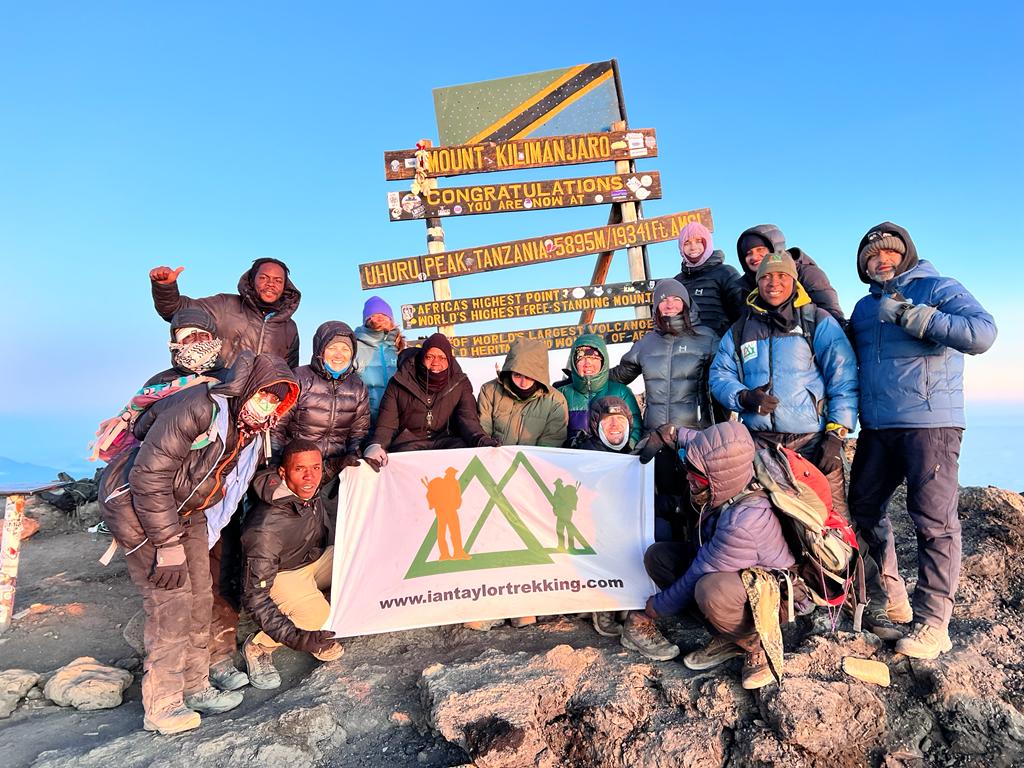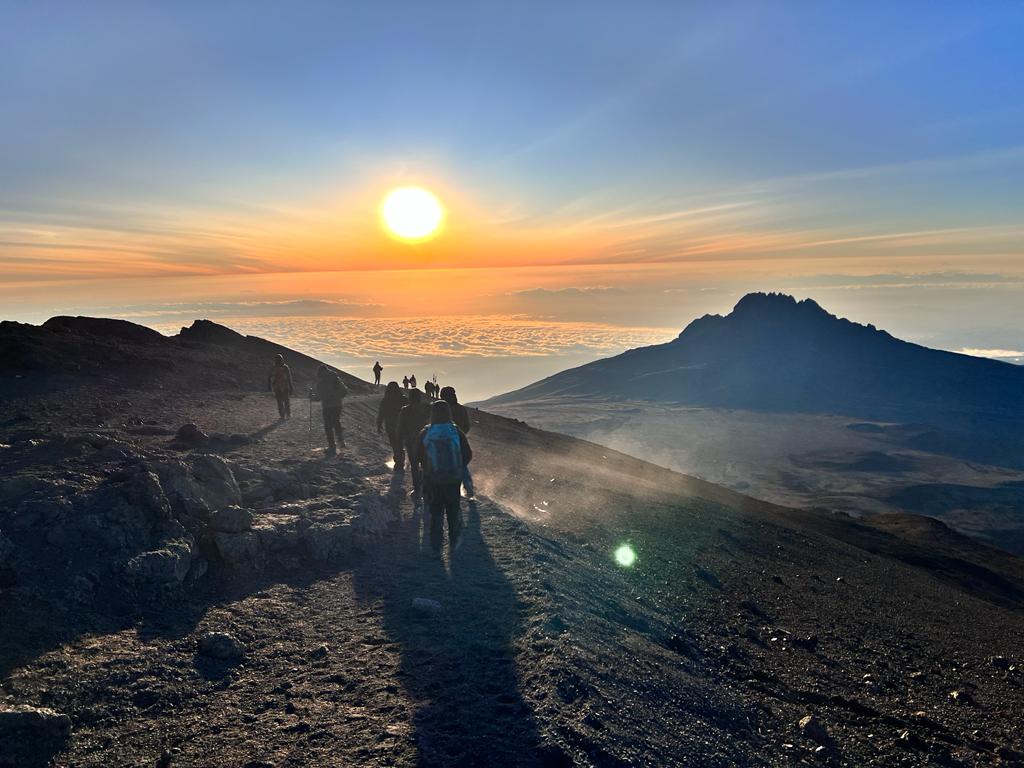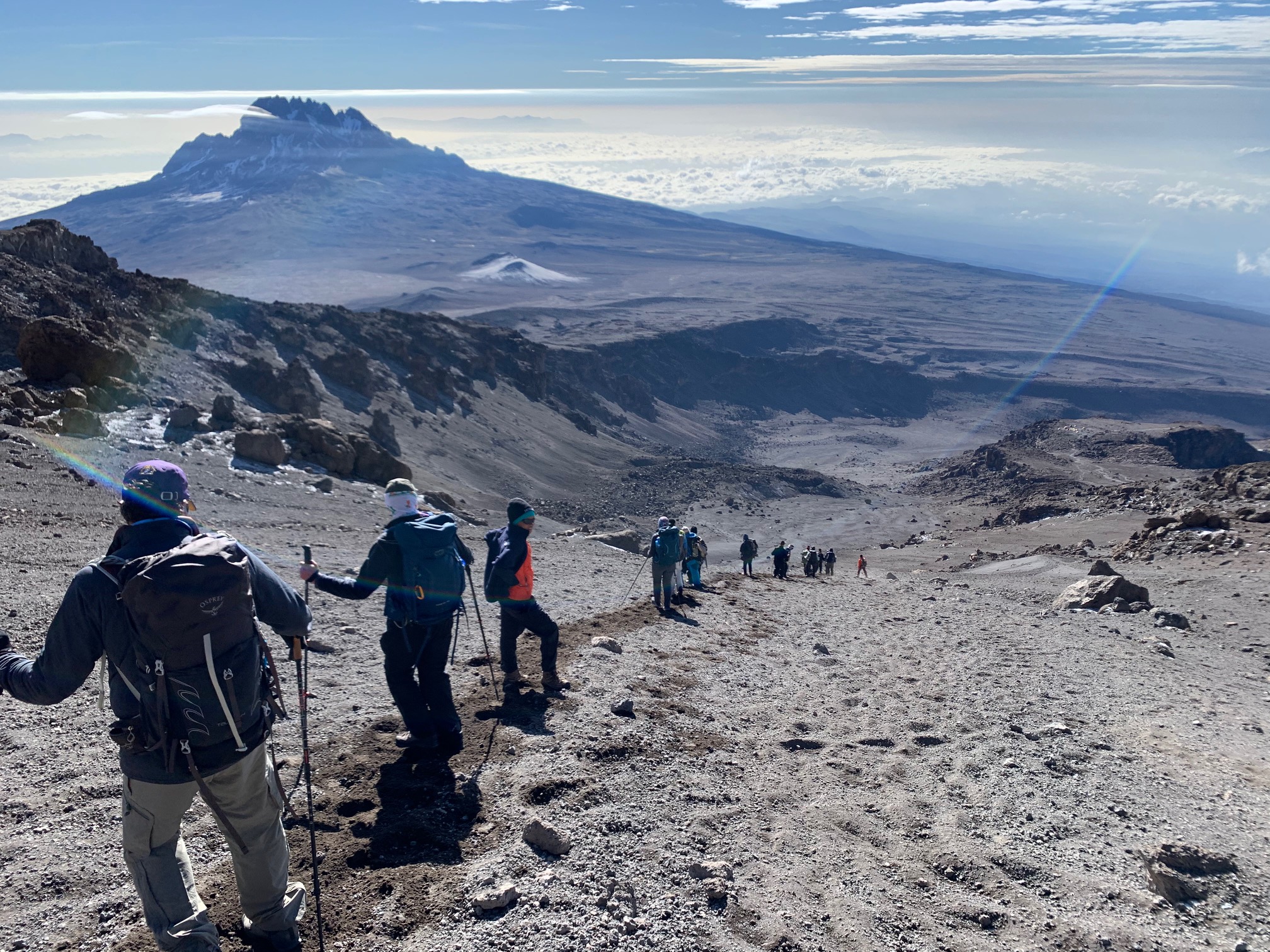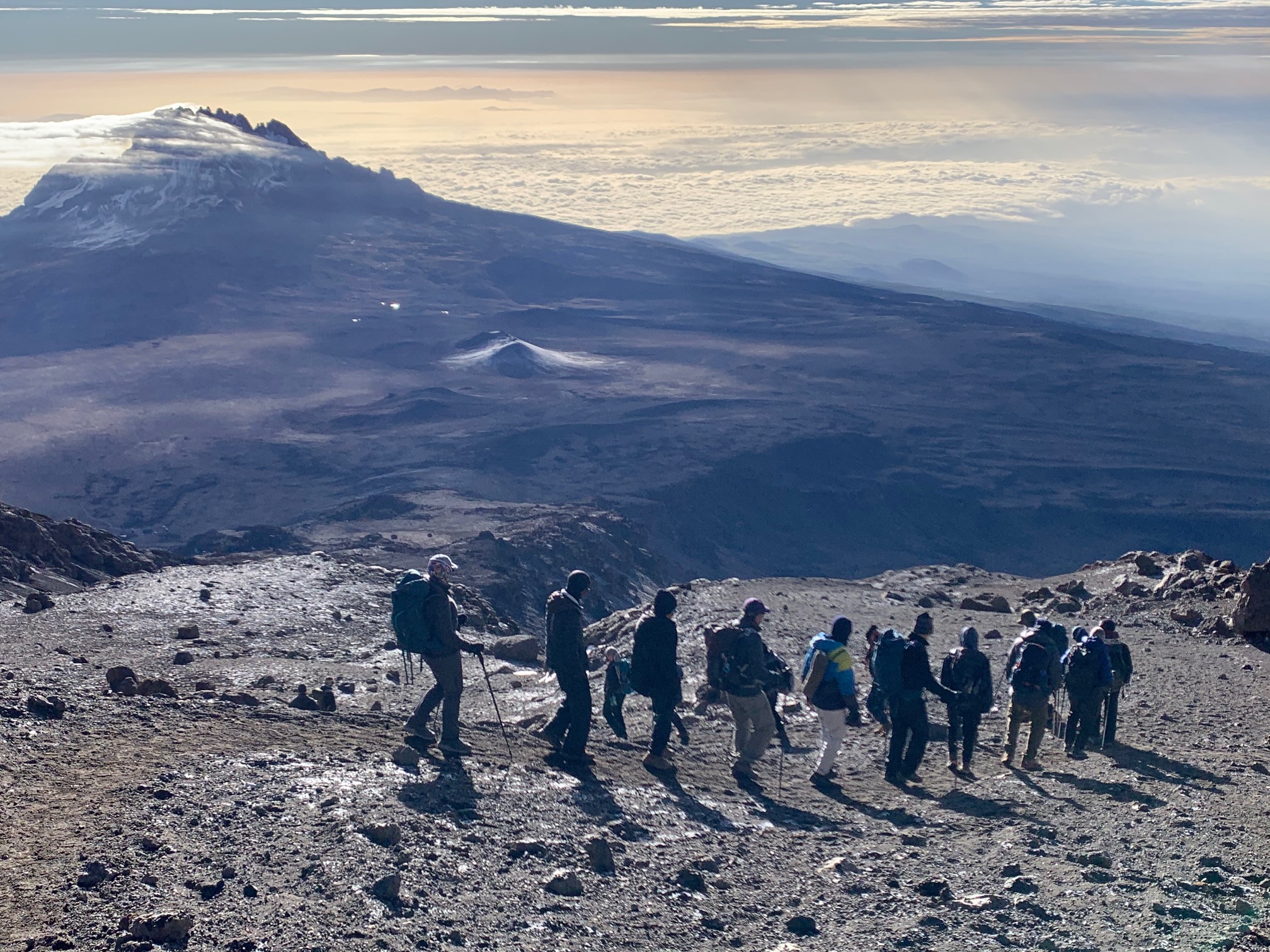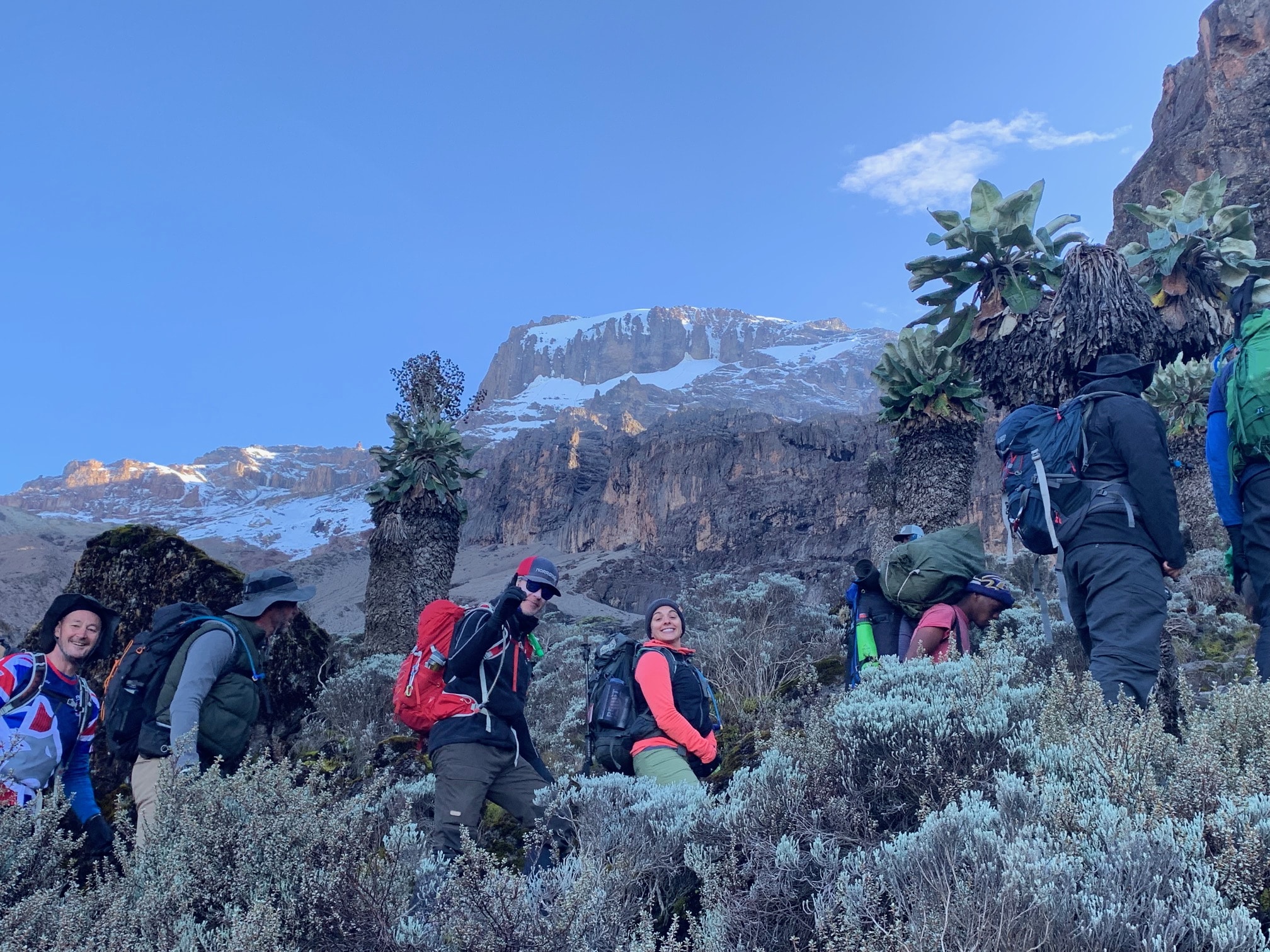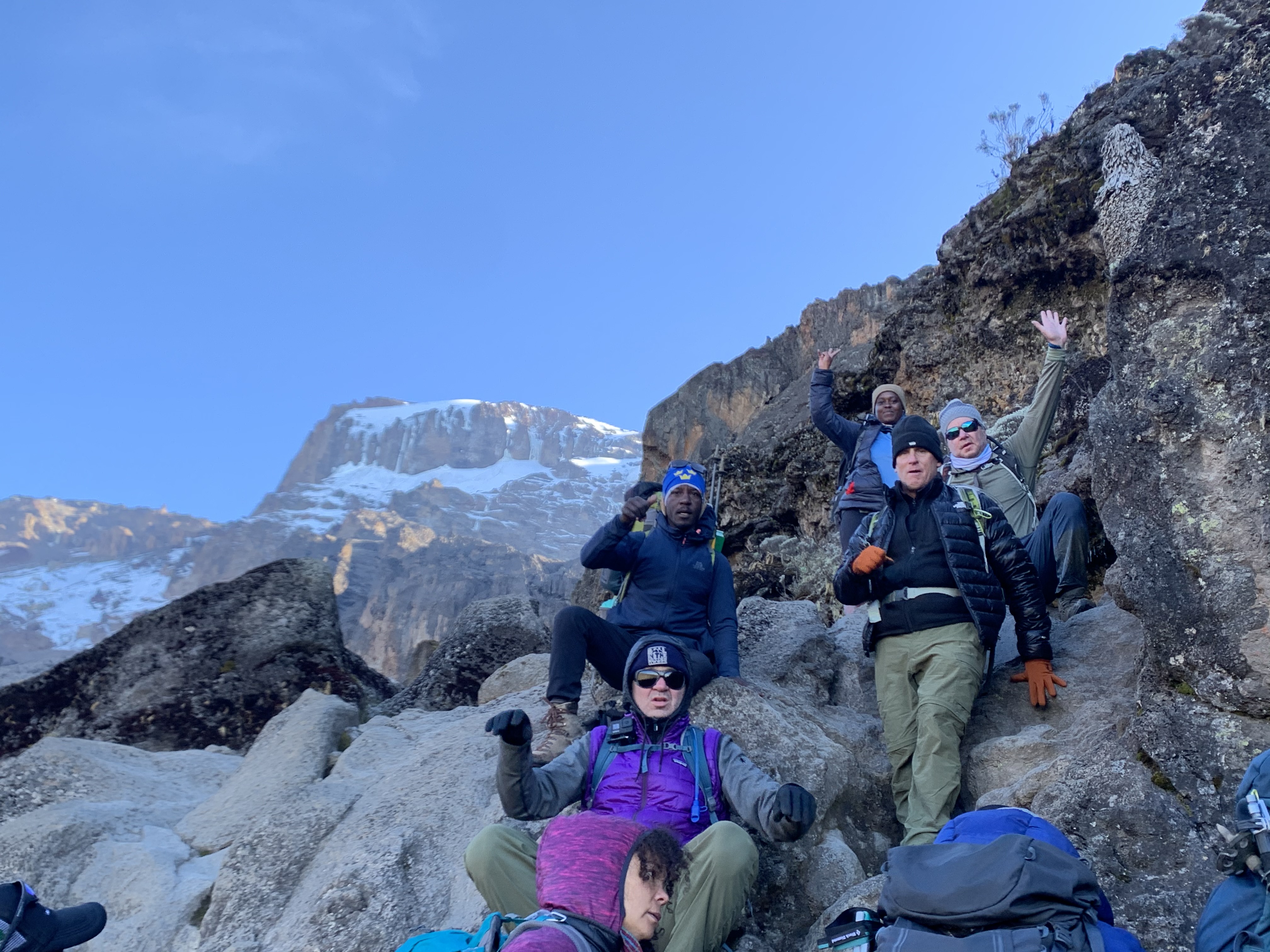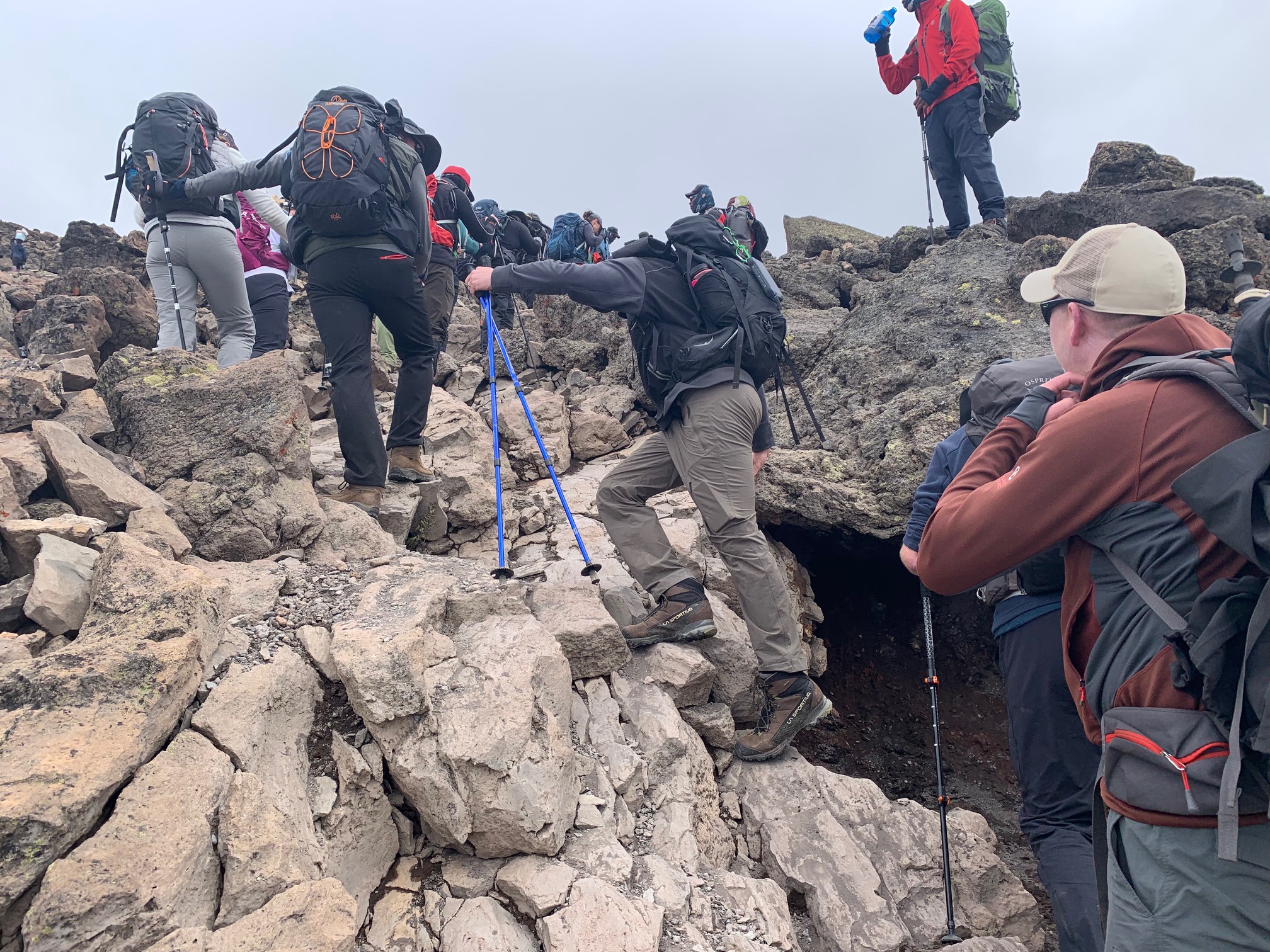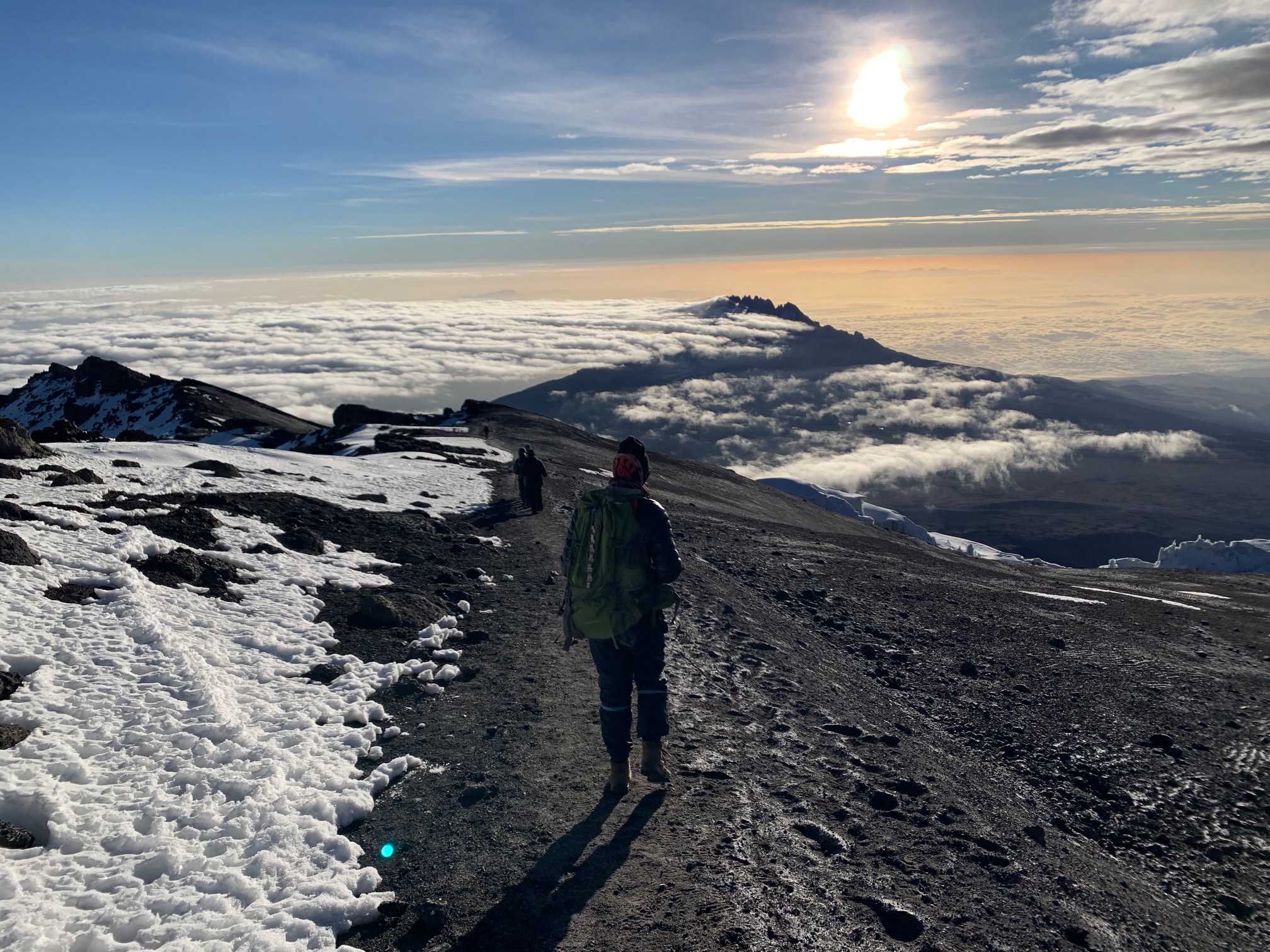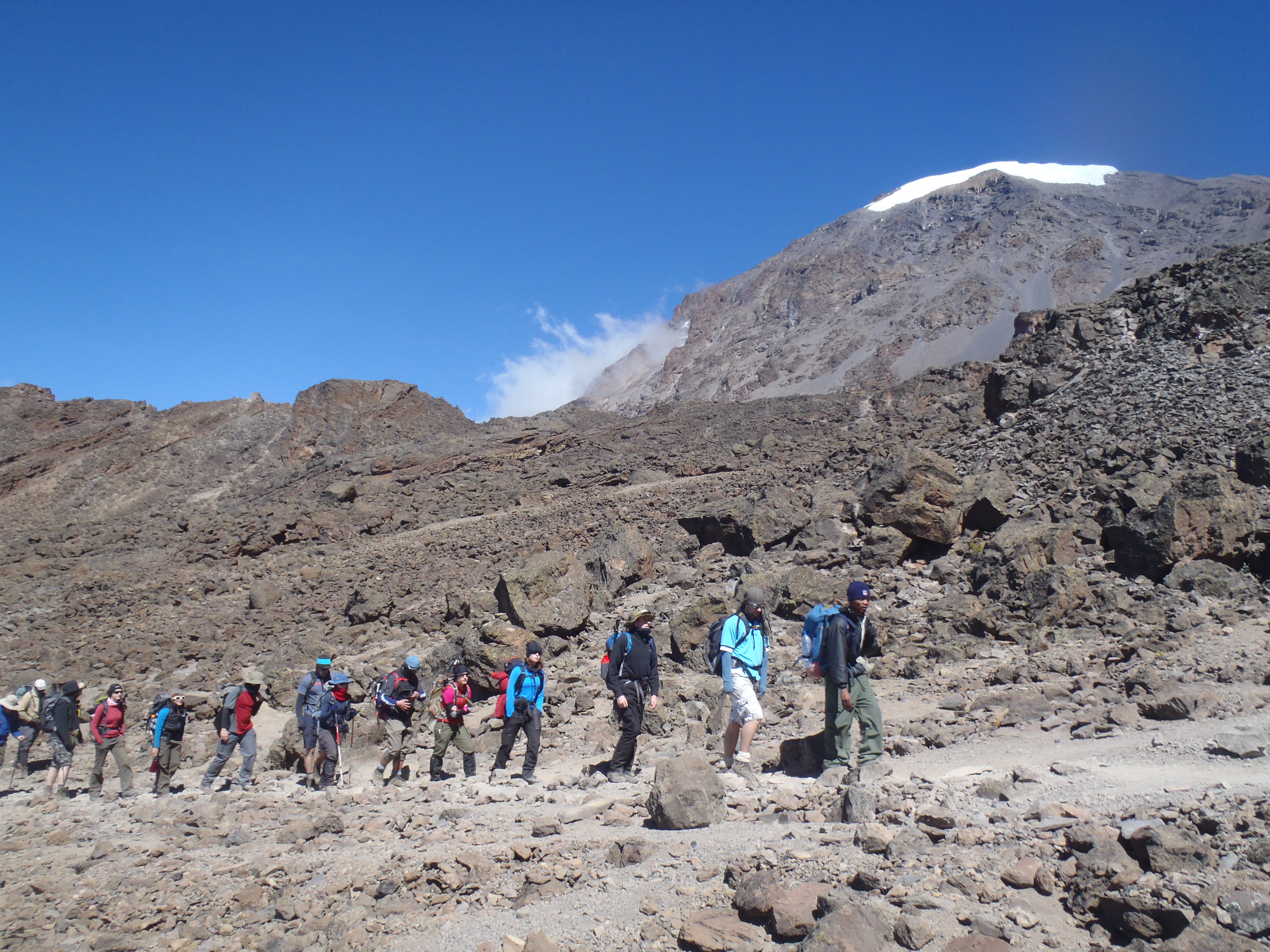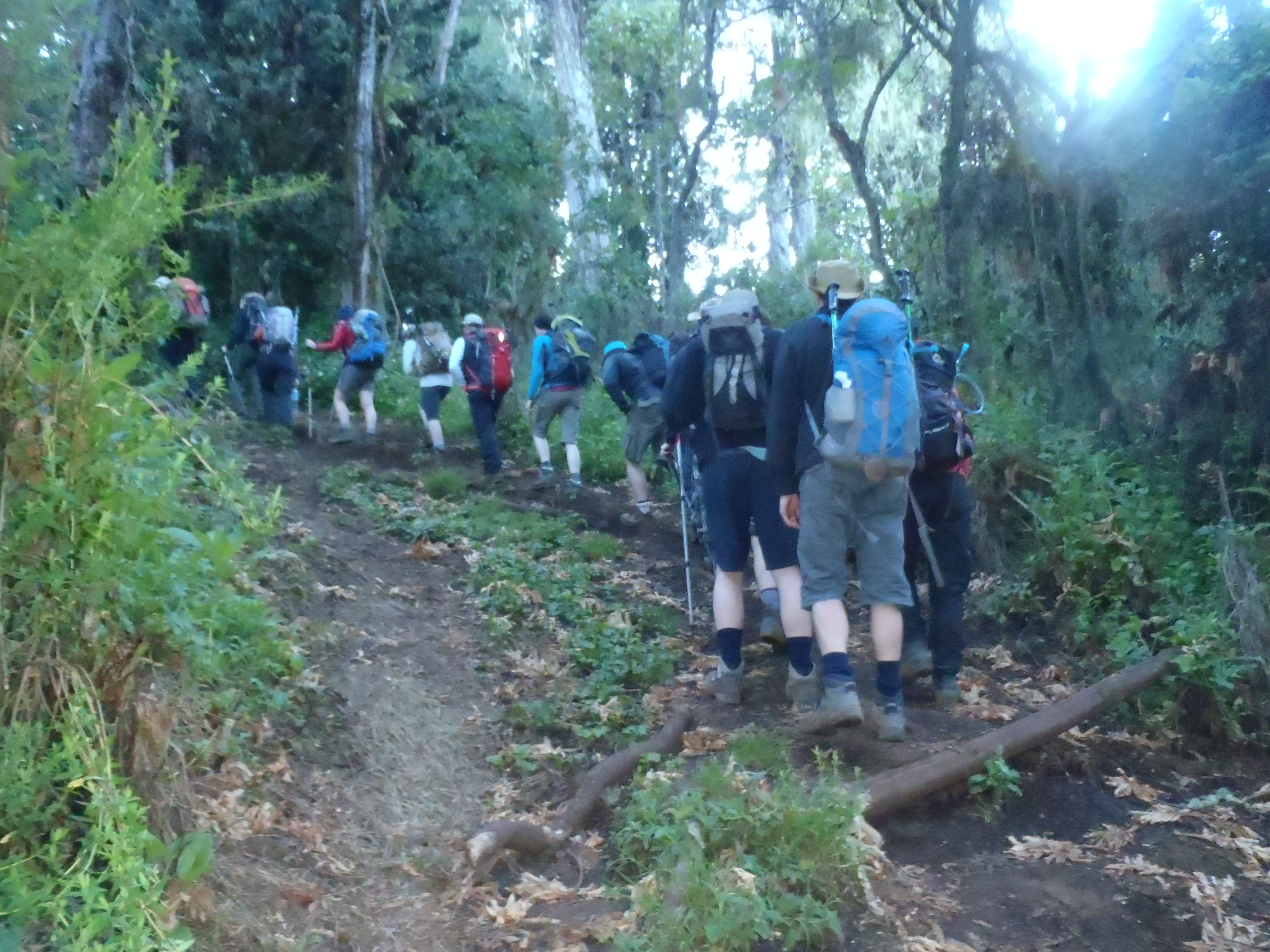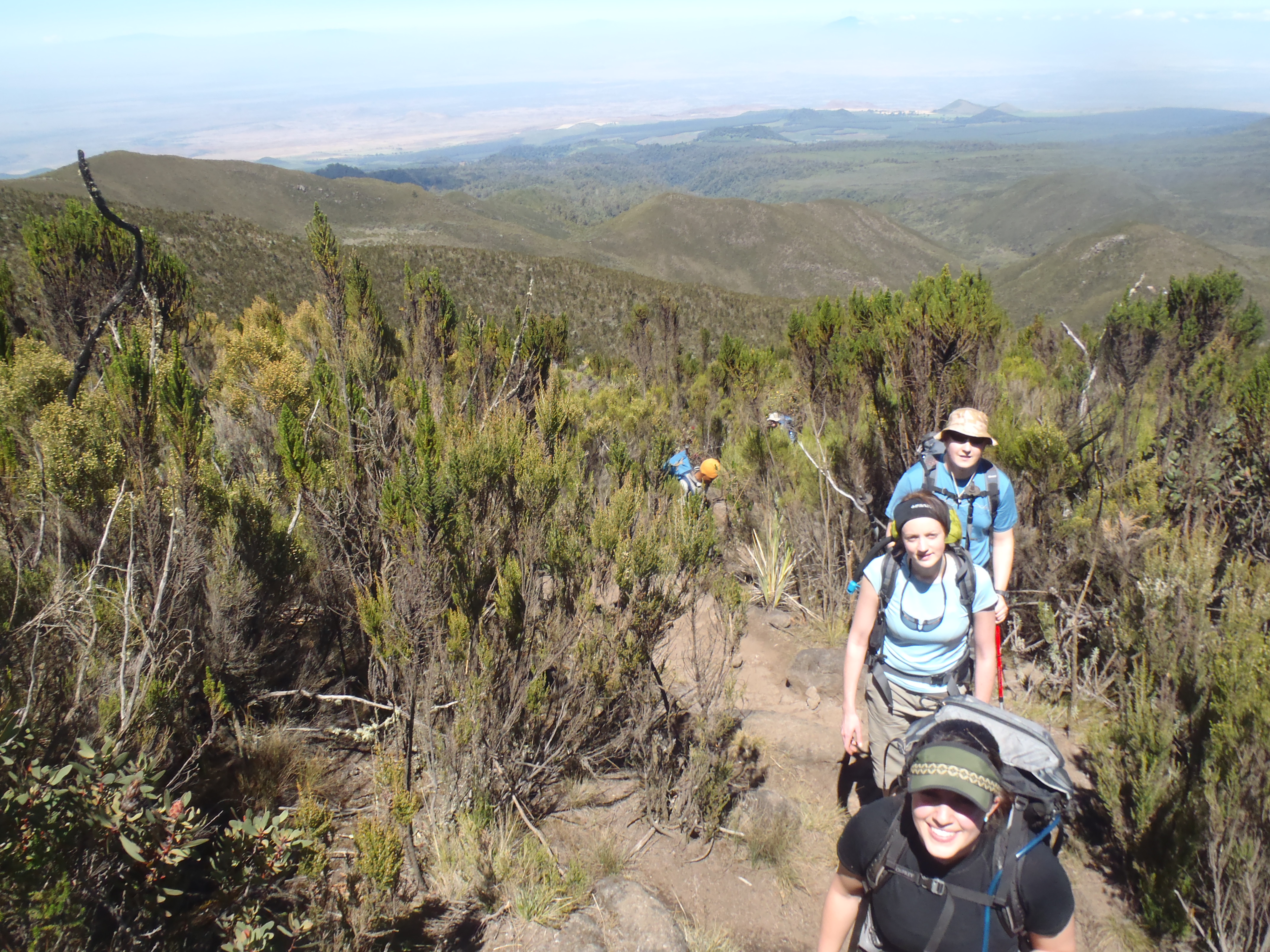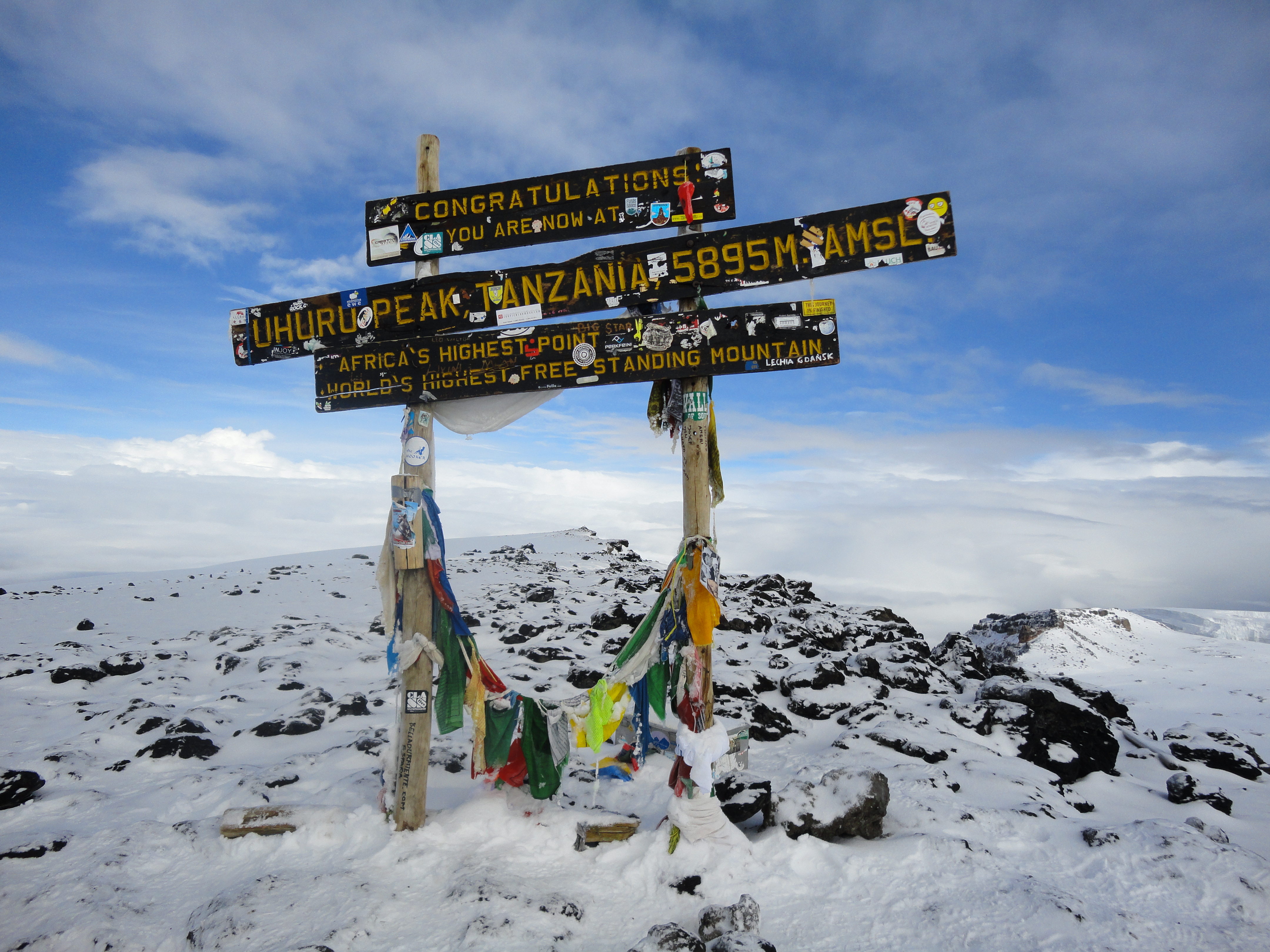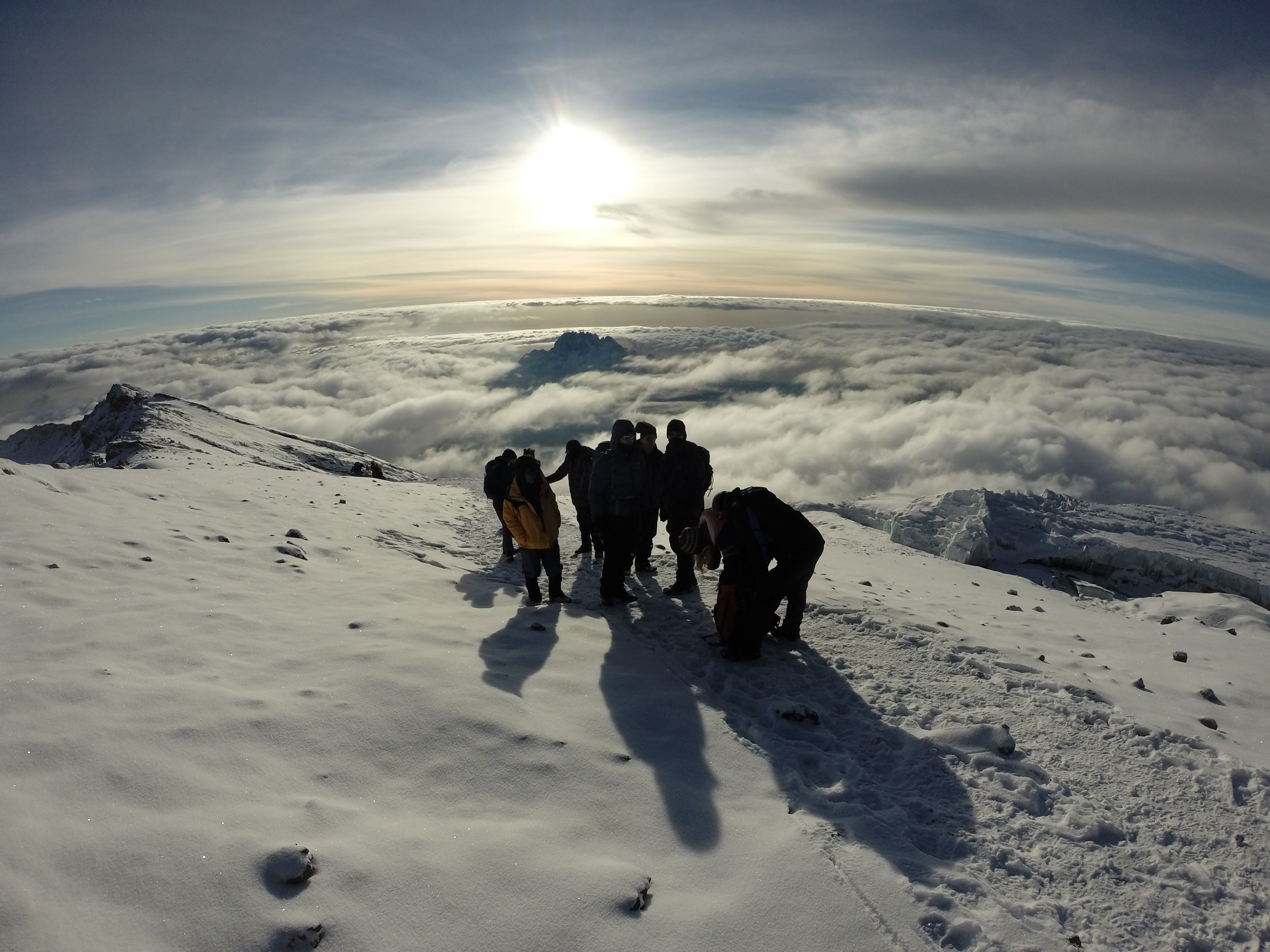After climbing Mount Everest and leading over 40 Kilimanjaro climbs, here is the advice we have on training for Kilimanjaro the best information. Depending on your altitude and hiking experience Kilimanjaro will be easier for some people and much harder for others. Check out our upcoming trips and contact us for more specific advice for you.
The Keys to Success
A lot of things need to happen to be successful on Kilimanjaro but here are a few. Firstly, the first key to success is in acclimatization, or how many days you spend on Mount Kilimanjaro. Check out our page with itinerary and further information about climbing Kilimanjaro.
Secondly, after the climbing Kilimanjaro on all the different route and in 5,6,7,8 and 9 days. I highly recommend a minimum of 8 days on the mountain using Kosovo Camp 16,000 feet as your high camp. I also recommend either the Lemosho or Northern circuit route.
Thirdly, you need direct access to people who have actually climbed Kilimanjaro. We know exactly how to prepare to be safe and successful.
Finally, you need the best crew and the best guide on the mountain. We have Kilimanjaro’s Number 1 Guide leading our team on Kilimanjaro.
Step by Step
There is never one size fits all when it comes to training so following an online plan would be a mistake.
Step 1: Get a Fitness Test
It is important to do a fitness test to understand your starting point and establish your specific Heart Rates training zones. The bulk of your training should be in zone 2 slow moving toward zone 3 training over time. Read more.
Step 2: Understand Heart Rate Training
It is important to build a very strong endurance base to have the correct physical condition for the specific trip you are doing. Read more.
Step 3: Understand the Specific Terrain
Every trip is different. Some trips are all stairs, others are trail, and Kilimanjaro has a challenging summit night and a lot of downhill trekking. Kilimanjaro has it all, steps, steep terrain up and down, 30 degree incline and moving across uneven terrain.
Step 4: Understand Elevation Gains & hours
Distances are not important on Kilimanjaro. What is important to understand is the elevation gains along with the amount about of hours you will exercising on a daily basis. Everything is judged in hours. Each day has 500m/ 1,640 feet of elevation gain or more so you need to comfortable doing these types of elevation gains on a daily basis in your training. Read more.
Step 5: Hill Training
Walking up and down hills of similar elevation gain on your chosen trip with weight in your backpack is a critical part of the training. Read more.
Step 6: Gym Training
It is important to supplement longer hikes with daily gym training sessions, building the correct strength and endurance. Read more.
Step 7: Train for the Downhill
Most people are not doing enough downhill training and building the correct stability, core and leg strength for for moving down steep trail and down steep stairs. Read more.
Are you Training Correctly?
When you have decided to climb Kilimanjaro on a 8 or 9 day itinerary then you need to decide on the following.
1). You need to consider your current ability. Are you currently training 3,4,5,6 days a week? If not, you need to develop plan to increase your training to 6 days a week with focus on endurance training, weights and training for the downhill.
2). Assess what training facilities you have available. Do you have hills, tall buildings and access to 30% incline treadmill and the stair master?
3). Does you plan include 10 plus hours of training per week and are you training in the correct heart rate zones?
3 Training Areas That People Get Wrong
There are three things most people don’t manage correctly as they prepare for Kilimanjaro. Firstly, training in the correct heart rate zones. Learn more. Secondly most people do not train correctly for the downhill. Learn more. Finally, most people do not come with the correct endurance training.
Be Mountain Specific
Climbing Kilimanjaro is not easy and requires months of specific preparation. It can take anywhere from 3 to 6 months to physically prepare. Kilimanjaro requires a mountain approach to training. Running will not cut it. We highly recommend mountain specific training, which means hiking uphill and downhill with a backpack building up the weight you carry.
70% of your training should be focused on the specific movement required for mountain trekking. You will be hiking on up and down 30 degree angle terrain on summit night.
If you can hike up and down hills on a daily basis this is ideal. If you can not you will need to get into the gym using the Stairmaster and 30 degree incline treadmill with a backpack, training in targeted heart rate zones building up the weight you carry.
Train 5 to 6 Days Per Week
We highly recommend training 5 to 6 times per week in preparation for climbing Kilimanjaro. These daily gym sessions followed by longer hikes on your day or days off should be the approach.
On the summit attempt, we aim for approximately 200m/656 feet of vertical ascent per hour. From Kosovo Camp 4,900m/ 16,000 feet. At that pace we can reach the summit in 5 hours 30 minutes. In the final phase of your training you should be able to gain 500m/ 1,650 feet in 1 hour 30 minutes with a weighted backpack. You should be able to do this on back to back days.
Long Hikes
Are you building up to long distance hill walking 5+ hours covering 1,000m/ 3,380 feet of ascent and descent? It is important to build up the length of your hikes along with the elevation gains you are getting in. If you do not have access to hikes it is important to find a building with lots of stairs that you can go up and down with a weighted backpack.
Daily Training
It is important to supplement the longer hikes with daily training that focus on building strength, core stability and endurance. If you think running and walking on the flat with a weighted backpack are enough, you need to think again. Leg strength and endurance (maintaining a heart rate in your endurance zone for longer than one hour) training are important for safety and success.
Plain and simple, spend more days acclimatizing on the mountain and build up specific physical training. These two things will give you the best chance at safely reaching the summit and getting back down again without guides having to carry you or your backpack. These are the two main reasons why people are not successful reaching Uhuru Peak on Kilimanjaro. We can help your understand this specific training.
Our Top 50 Tips
Climbing Kilimanjaro is truly one of the great trekking experiences. So why not spend more days on the mountain to get the most out of your experience. I know it costs more, but you will come away with a much richer experience. Check out our Top 50 Tips.
Think About the Elevation Gains and Lack of Oxygen
When you think about these elevation gains and long steep descents you need to review the daily distances, elevations gains up and down.
Consider the incline on ascent and descent and think how you train for low oxygen environments. We can help you understand the key elements to this and how you can map out a training plan for climbing Kilimanjaro.
Hiking up and Down Hills is the Best Training
Hiking up and down hills with weight is by far the best training you can do. Try to build up from 3 hour to 8 hour hikes once a week. Taking regular and increasingly longer hikes will help develop the muscles that you need when you arrive on the side of Kilimanjaro.
This can not be on the flat. You need to trying to gain 500m/ 1,640 feet, building up to 1,000m/ 3,280 feet ascents and descents. However, very few people are lucky enough to have access to hills every weekend. Try to find some local hills or stairs to walk up and down if possible. Gradually increasing the duration of your walks will help to develop your stamina and also assist in preparing you for being on your feet over long distances.
When out on training hikes, ensure that you always wear the boots you intend to take to Kilimanjaro. Getting used to and breaking in your trekking boots will assist in making you as comfortable as possible on your climb. It is also good to train in the same backpack you will be taking with you on the climb. This will help you feel at ease with it and gradually add weight to the pack to build strength. Building up gradually from 6kg/ 13lbs to 12kg/ 26lbs over a 6 month period. Learn more.
The Dream Team
Our Head Guide was voted Kilimanjaro’s Number 1 Guide and we have had the same team on the mountain for 10 years. We are highly invested in our staff. If you are signed up to an Ian Taylor Trekking trip you will be on the mountain with our staff, who know us personally.
We do not outsource our trips on the mountain. Therefore you know you are in good hands with people who know what it takes to aid in your success! We have our own chef’s, kitchen crew, guides, porters and assistant staff to make sure your every need is met on the mountain!
Talk to the Experts
Before you travel to Tanzania, we will be here to answer all of your questions. We want you to have access to the right information. Cumulatively our office staff have 45+ Kilimanjaro trips under their belts! Have a look at our upcoming trips and start planning your journey to the Roof of Africa!
Speaking From Experience
Ian has climbed Kilimanjaro 40+ times to date and available to help you prepare for your climb. We encourage you to read our blog post on our approach to summit night. This will help you understand what training you need to be building up too. We have the inside knowledge and are here to help. We are happy to talk specifically on your personal needs as not everyone is starting from the same base fitness. Learn more.
Training for Kilimanjaro The Best Information
Despite being a mountain which is accessible to most people and not just experienced trekkers, you must prepare to climb Kilimanjaro. This is important to understand! If you are used to hiking up and down hills with a weighted backpack, while covering long distances in difficult terrain, then you have less training to do. However, if you are older or not used to hiking, but consider yourself to have good overall fitness, then you will have more specific training to do. Kilimanjaro is a long slog, so you need to be doing more specific training geared towards hills and stairs, building your muscle memory by carrying a weighted backpack.
Giving yourself enough time to train for a trip like this is essential. If you are only have limited training/experience with hiking, you will want to make sure you give yourself ample time to prepare. You never want to jump into the specific training right away if you do not have a good base level of fitness already. Get in touch today and we can talk through where you are and where you need to be for the climb.
Don’t Underestimate the Climb
Mount Kilimanjaro should not be underestimated. Especially the summit night on Mount Kilimanjaro. Hiking to its summit is a serious challenge which requires significant preparation and specific physical conditioning. Leg strength and endurance training are both the key to success. With forward planning, the right acclimatization schedule and the right attitude to training, you will give yourself the best chance of success. The goal is to reach the summit, however the entire journey, up and down the mountain, is only going to be enjoyable and possible if you have put in the right preparations.
Specific Training
Climbing Mount Kilimanjaro is a physical challenge which is well within the reach of most people. However, you must be willing to do the specific training. I have climbed Kilimanjaro many times and I still train 4 or 5 times a week.
I also always have a weighted backpack to maintain leg strength and endurance which are both key to success. This specific training is absolutely necessary for success no matter your level of fitness. We strongly advise you to seek medical advice before starting a training program. Particularly if you have concerns about your health or are getting older.
Focusing on Summit Night
Remember the summit day is 12+ hours. From our high point at Kosovo Camp, at 4,900m/ 16,076 feet, you have ascend 995m/ 3,264 feet into extreme altitude to reach the summit. Then you also have to drop 2,795m/ 9,170 feet in one day to reach the camp for the night. This requires serious preparation.
It is important to start training as early as possible before your scheduled climb. Building strength, fitness and stamina. The best physical preparation is activity which simulates, as far as possible, the demands on your body that you will have during your climb of Kilimanjaro.
In my opinion there is no better way to building endurance than by walking up and down hills with a weighted backpack. Doing this while building up weight in your backpack is key to success. If you do not have access to hills you need to be using a stair master or incline treadmill to gain the required strength and endurance. READ SOME REVIEWS from our Kilimanjaro trips.
Some Additional Information
I am just back from my 35th Summit of Kilimanjaro and one thing that stays the same for me, is you need as much time to acclimatize as possible. The group I was leading was on our unique 8 day Lemosho Route itinerary and we also had a seven day Machame climb running around the same time.
We had 95% success on the 8 day trip and 80% success on the 7 day trip. I can not emphasize how important the extra day is in terms of your safety, enjoyment and your success.
Mentally Prepare for the Climb
Being mentally prepared will also be crucial to your chance of a successful summit climb. Progressively pushing the limits of your physical training will help develop your capacity to endure the stress and strain on your body. Get used to your gear, sleeping bag and air mattress. If you are not used to camping, take time to go camping to get more comfortable with sleeping outdoors. Test your gear and be used to using each piece of equipment.
Having a positive attitude is also extremely important when taking on a challenge like this, so be prepared for all aspects of the trip. It is helpful to remind yourself that thousands of people have achieved this feat before you, and you can do it too. But do be prepared for setbacks and difficult stages during the climb as you try to adapt to the lack of oxygen. Remember that our guides, who are the best, will be there to encourage and inspire you every step of the way!
Multi-Day Training
Getting multi-day training or hiking prior to your Kilimanjaro climb is extremely important. Training once a week in the hills is simply not enough. You will be walking for many hours at a time, on a multi-day basis. You will also need to train with your backpack. Your backpack will have two or three liters of water, spare layer, rain gear, snacks, camera, medical kit, valuables and sun cream in it each day. Being used to carry double this amount of weight at home is essential for when you are on Kilimanjaro.
If you haven’t been training with double the weight you will carry on the trek, on a multi-day basis you are going to get sore legs, back and shoulders. You need to get out and train in the hills. Even better if you can do back to back days to aid in the strength/endurance training. These back to back hikes along with daily training sessions in the gym, will help to push your fitness level to where it needs to be for the climb.
Make Sure you Come Prepared
You have invested a lot of money to do this climb. You have bought all the gear, paid for the trip and bought plane tickets. There is no point in doing all of that and not putting in the efforts in your training. You have also signed up to a group climb and you need to consider the group and don’t show up unprepared. We don’t want to have to turn you around because you couldn’t find the time to train. You need to respect the mountains, the team you are going with and our team on the ground. So come prepared and make sure you find the time to train and make sure it is the correct training. We can help!
Give Yourself Enough Time to Build Specific Conditioning
It is no good trying to cram all of your training into the month before you depart. Put your training plan together months in advance, in order to build on the correct fitness, conditioning and endurance. This can take anywhere from 4 – 8 months depending on where you re starting form. Taking the right amount of time to train will also help you avoid injury.
In addition to getting out in the hills, you will need to be supplementing that training, 4 – 5 times a week, either in the gym or on stairs/hills. Remember, you will be walking up and down hills on steep and challenging terrain up to 6 hours most days and 14 hours on the summit night.
You will need to manage the distances and miles you are walking before the trip to make sure you get the specific conditioning for the climb. Make sure you have followed the base, build and peak format for your Kilimanjaro training. You can reduce your training before you depart on your trek a week in advance. Get some well-earned rest and start your trip feeling fresh and well hydrated.
Nutrition
Don’t ignore nutrition. You need a well-balanced diet to maintain a good level of health. As your routine picks up and you train harder, more strain will be placed on your carbohydrate stores. Before, during and after exercise you will need to supply your body with the fuel it needs!
Going on a trip fit, strong and ready, gives you one less thing to worry about on the mountain. Feeling ready boosts your confidence, allowing you to get the most out of the experience.
Mix-up Your Training
Don’t be one dimensional in your training. Hill walking and stairs should be the bulk of your training. This will build the specific muscle memory, endurance and strength training all at the same time. When you are not feeling it, do something different. Go out an do a 10k jog, bike ride up hills, yoga, stretching and weight work. Mix up your training so you are building your core, stability and overall fitness.
The Real Key to Success
When doing your training in the right heart zone, you will be developing your endurance. Strength in the muscle is gained in the slower movement and forcing the legs to deal with the extra load. This is how you will build that strength in the muscle. That’s why stair training is important do do at a slow, controlled heart rate. Also, carrying weight in your backpack will build the strength needed.
If you are carrying a 6kg/ 13lbs backpack when on Kilimanjaro, then you will need to build towards carry double that in your training. The reason for building up to carrying double the weight in your training is to stress the body at sea level. Therefore, when you take off the weight at altitude, you have the specific strength and conditioning in the body. Essentially, you have to force more stress on the body at sea level to compensate for the lack of oxygen on the mountain.
When I am training I am trying to keep my heart rate in the 135 – 150 range. This will be different for different people. You should be testing and monitoring your optimal heart rate zones with a professional.
Training Should be Specific to Your Needs
Make Sure you Have the Right Gear
Remember it’s not bad weather we experience, it’s not having the right gear. We provide you with an itemized kit list when you sign up to our trips. That way you know exactly what you need to bring with you to be successful. You can also watch our Kilimanjaro packing video. If you need further information, CONTACT US and we can help you gather the right clothing and gear needed for your climb.
Climb Kilimanjaro With Professionals
Getting the right training advice for your Kilimanjaro climb is important. It is also important to climb with the right team who are investing in the local community. We are very dedicated to helping our staff move up in the ranks. Starting as porters to kitchen staff, servers, tent crew and ultimately, becoming a guide. We also help a local orphanage near Kilimanjaro. Let us be a part of your Kilimanjaro story and help you achieve the summit. Follow us on Instagram and GET IN TOUCH today to book your trip to the Roof of Africa!

